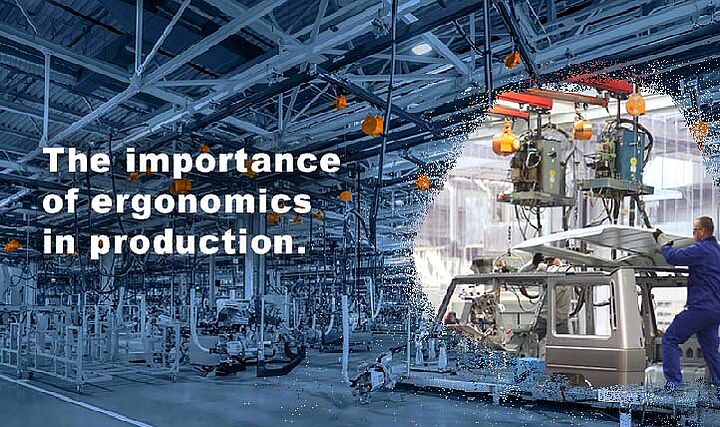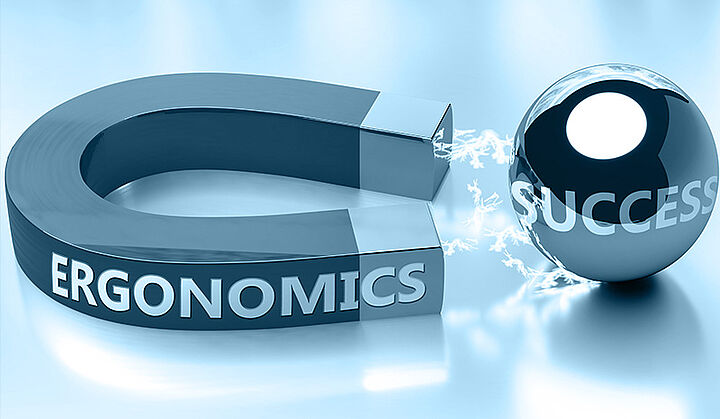In the fast-paced world of the production industry, efficiency and productivity are paramount. One often overlooked but crucial factor that significantly impacts both workforce well-being and the overall success of the operation is ergonomic workplace design. Ergonomics, the science of fitting a workplace to the user's needs, plays a pivotal role in ensuring the safety, comfort, and health of employees while enhancing productivity. Let us delve into the reasons why a well-thought-out ergonomic workplace design is so vital in the production industry.

1. Employee health and safety
A primary concern in any production environment is the well-being of workers. Jobs in this industry often involve repetitive movements, heavy lifting, prolonged standing, and exposure to hazardous materials. By incorporating ergonomic principles, such as adjustable workstations, supportive seating, and proper tools and equipment, the risk of work-related injuries and musculoskeletal disorders can be significantly reduced. Healthier employees translate to fewer sick days and increased workforce continuity, benefiting both the employees and the company.
2. Enhanced efficiency and productivity
An ergonomically optimized workplace can streamline workflows and boost productivity. When employees are comfortable and experience reduced physical strain, they can concentrate better on their tasks. Efficiently designed workstations allow workers to access tools and materials easily, minimizing unnecessary movements and saving time. Improved efficiency means increased output, reduced production costs, and a more competitive edge in the market.
3. Employee morale and satisfaction
A well-designed workplace that prioritizes employee comfort and health fosters a positive work environment. Employees feel valued when their well-being is considered, and this boosts morale and job satisfaction. Happy employees are more engaged, motivated, and committed to their work. Consequently, this leads to lower turnover rates, reduced recruitment and training expenses, and a more experienced and skilled workforce.
4. Cost savings and reduced absenteeism
Investing in ergonomic workplace design may seem like an initial cost, but it yields substantial long-term benefits. Fewer work-related injuries and health issues mean lower medical expenses, workers' compensation claims, and disability costs. Moreover, by minimizing physical strain and discomfort, ergonomic interventions reduce the likelihood of absenteeism due to health-related reasons, further enhancing productivity and overall output.
5. Compliance with Regulations
Many countries have regulations and standards in place to protect workers' health and safety. Non-compliance can result in legal consequences and fines. A well-designed ergonomic workplace helps companies meet these regulatory requirements, ensuring a safe and healthy working environment for employees.
6. Sustainable business practices
Ergonomic workplace design also aligns with sustainability goals. By optimizing energy use and reducing waste through streamlined workflows, companies can contribute to a more sustainable future. Additionally, a focus on employee well-being fosters a corporate culture that values not only productivity but also ethical and responsible business practices.

In conclusion, a thoughtfully designed ergonomic workplace is indispensable in the production industry. It not only ensures the health and safety of employees but also enhances efficiency, productivity, and employee satisfaction. By investing in ergonomic solutions, production companies can create a win-win situation where both employees and the organization prosper, leading to long-term success and sustainability in an increasingly competitive industry.
Kromer is your specialist for Tool Balancers and Tool Retractors of all sizes and types. Thanks to the practical handling devices, your workers in assembly are relieved of the weight of the tools being used and can thus carry out their work in a much more ergonomic and safer manner. We offer inexpensive entry-level load balancer and load retractor types through to highly professional heavy-duty load balancer versions for loads up to 300kg. Discover our spring balancer range and find out about the individual product specifications of our load handling devices. We are also happy to provide suggestions for possible spring balancer applications and support you with the implementation of our lifting equipment in your work environment – tailor made and task related.